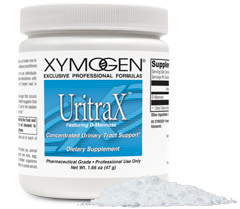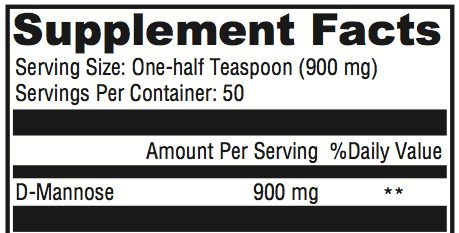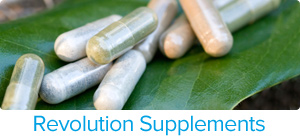UritraX
 Amino acid and sugar complexes called lectins may be produced by certain organisms allowing them to adhere to the inside walls of the bladder and urinary tract, where they may continue to thrive.[1]
Amino acid and sugar complexes called lectins may be produced by certain organisms allowing them to adhere to the inside walls of the bladder and urinary tract, where they may continue to thrive.[1]
D-mannose is a simple sugar produced in the body and occurring naturally in certain fruits, especially cranberries and pineapples. The adult dose of D-Mannose is more concentrated in D-mannose than these fruits or juices, and studies suggest that D-mannose is ten times more effective than cranberries.[2]
Nearly all ingested mannose gets excreted through the kidneys and into the urine.[3,4] Research suggests that lectins, present in the urinary tract and bladder, adhere to the D-mannose more readily than they do to the walls of the urinary tract. This action helps support the body’s ability to flush out these unwanted particles through the urine.[5] D-mannose users report that they can feel the effect in 24-48 hours.[6]
D-Mannose is not capable of killing either “friendly” or harmful bacteria. It simply supports the naturally protective “flushing out” mechanism of the urine.[6]
Directions
Mix 1/2 teaspoon in 2-4 oz of water 1-3 times daily, unless otherwise directed
References
- Michaels EK, Chmiel JS, Plotkin BJ, Schaeffer AJ, “Effect of D-mannose and D-glucose on Escherichia coli bacteria in rats”. Urol Res 1983;11(2):97-102
- Zafriri D, Ofek I, Adar R, Pocino M, Sharon N. Inhibitory activity of cranberry juice on adherence of type 1 and type P fimbriated Escherichia coli to eukartotic cells. Antimicro Agents Chemother 1989; 33:92-98
- Toyota S, et al. [article in Japanese], [Anti-bacterial defense mechanism of the urinary bladder. Role of d-mannose in urine], Nippon Hinyokika Gakkai Zasshi. 1989 Dec:80(12)1816-23
- Ganda OP, et al. Metabolic effects of glucose, mannose, galactose, and fructose in man. J Clin Endocrinol Metab. 1970 Oct;49(4):616-22 5. Sharon N, Ofek I, “Safe as mother’s milk:carbohydrates as future anti-adhesion drugs for bacterial diseases”. Glycoconj J 2000 Jul-Sep, 17 (7-9):659-64. Review
- Wright, Jonathan, D-Mannose and Infection, “Nutrition & Healing”, June 1999, Vol 6, Issue 6
- Amacker-Francoys I, et al. The metabolisable hexoses D-glucose and D-mannose enhance the expression of IRS-2 but not of IRS-1 in pancreatic beta-cells. Exp Clin Endocrinol Diabetes. 2005 Sep;113(8):423-9 [PMID: 16151975]
- Sharon N, Ofek I, “Safe as mother’s milk:carbohydrates as future anti-adhesion drugs for bacterial diseases”. Glycoconj J 2000 Jul-Sep, 17 (7-9):659-64.[PMID: 11421356]
- D-Mannose. www.naturaldatabase.com {accessed 3.26.07}








